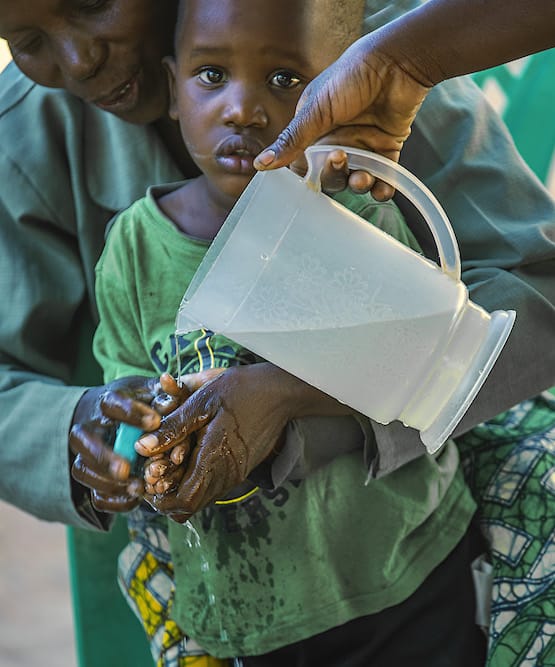The problem: lack of access to health and wellness information
Worldwide, 5.3 million children under the age of five die each year. [1] Over half of these deaths could be prevented, and maternal mortality slashed, if families were to make use of simple, inexpensive, or free interventions such as handwashing, giving birth in health facilities, breastfeeding, and making use of readily-available treatments for malaria, pneumonia, and diarrhea.
Unfortunately, lack of information combined with sociocultural barriers (including reluctance to consult medical professionals) means that preventable deaths continue, particularly in the developing world.

The solution: media health campaigns
Media health campaigns facilitate information exchange and shifts in cultural norms. Radio, television, and mobile videos can be used to reach millions of people in low-income countries, raising awareness, for example, about how to identify and protect against potentially dangerous illnesses, and what to do if they occur. At the same time, broadcasts can help break down cultural barriers that prevent people from adopting healthy behaviors, persuading vulnerable populations, for instance, to make use of health workers and available resources.
How Development Media International works
Most poverty aid programs focus on the “supply side” of interventions — for example, training doctors and nurses, supplying equipment and medications, and building healthcare facilities. In contrast, DMI works on the critical but much-neglected “demand side.”
Many of DMI’s campaigns are broadcast on radio in the form of minute-long spots in local languages, written by DMI’s creative teams in Africa with oversight from creative experts in the UK. They run 10 times per day over several months or years. Some campaigns also involve interactive radio programs, which encourage audiences to phone-in and participate in the radio shows.
TV spots, usually one minute in length and featuring local actors, are broadcast at peak times on popular channels to engage large audiences, ideally at a minimum of three times per day. Mobile video campaigns can be shared via peer-to-peer networks through SD cards or Bluetooth, or on social media, depending on the target demographic.
DMI researches local beliefs, attitudes, behaviors, languages, and barriers to behavior change in order to create customized media spots that encourage communities to make use of the health care services already available to them, as well as promote positive behaviours that do not rely on services.
Delivered at scale, DMI’s campaigns are estimated to cost only US$20 per child. After DMI conducted a major five-year campaign in Burkina Faso, they evaluated its success with the largest-ever randomized controlled trial to measure the impact of media on health behaviors. Results showed that child mortality was reduced by 9.7%, with approximately 3,000 lives saved — suggesting that this approach is among the most cost-effective methods of saving children’s lives. [2]
DMI’s Burkina Faso campaign was the first time mass media had been scientifically proven to change behaviors in a low-income country. DMI has since completed a second randomized control trial on a family planning campaign in Burkina Faso. [3]
The organization is currently running programs in Burkina Faso, Côte d’Ivoire, Ethiopia, Madagascar, Malawi, Mozambique, Tanzania, Uganda, and Zambia.
